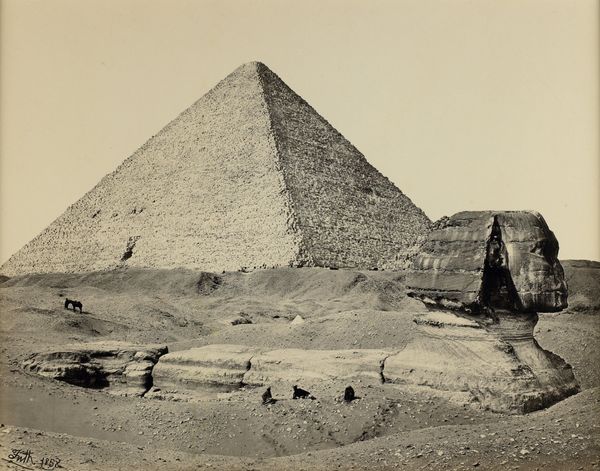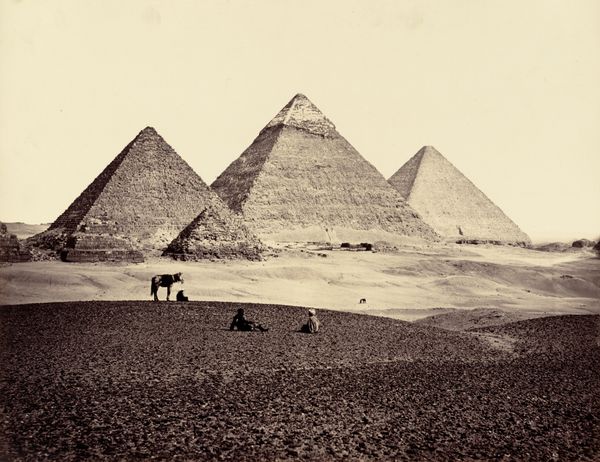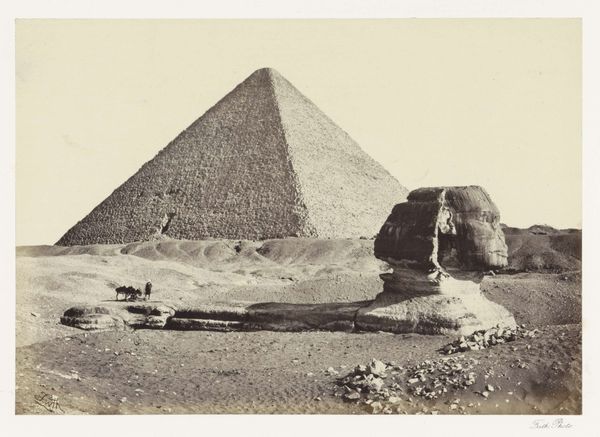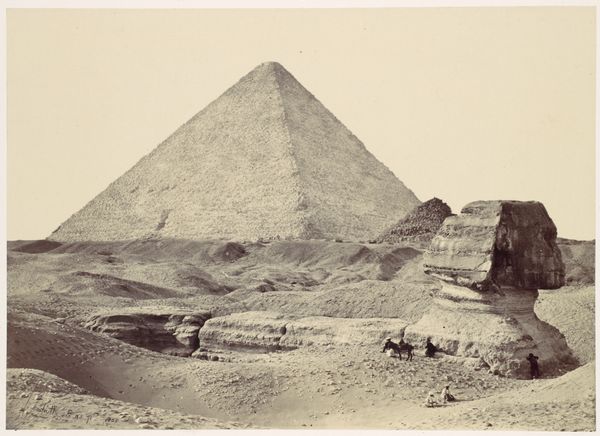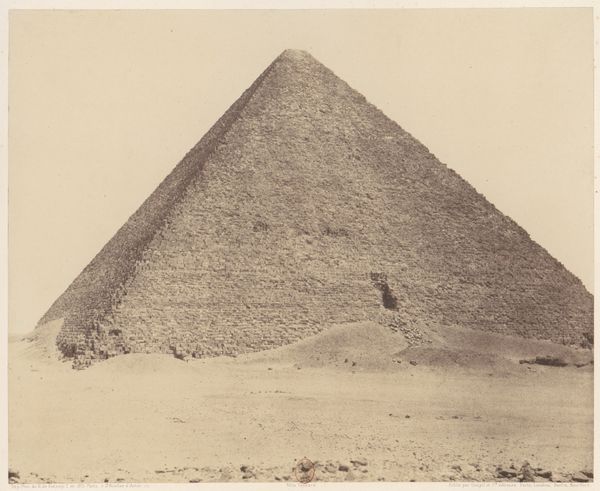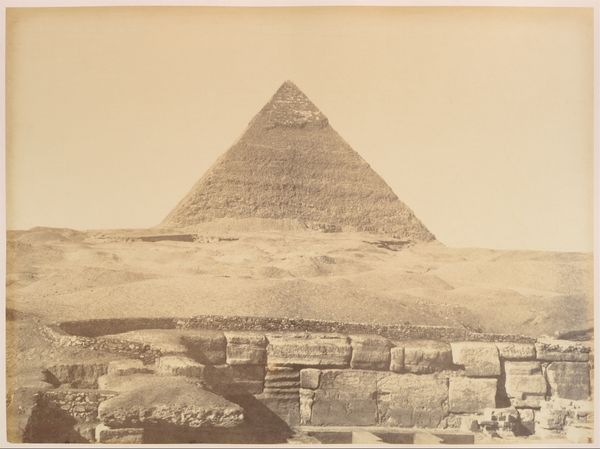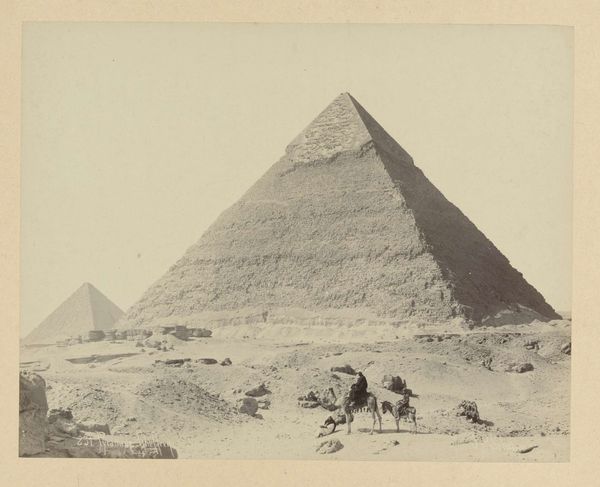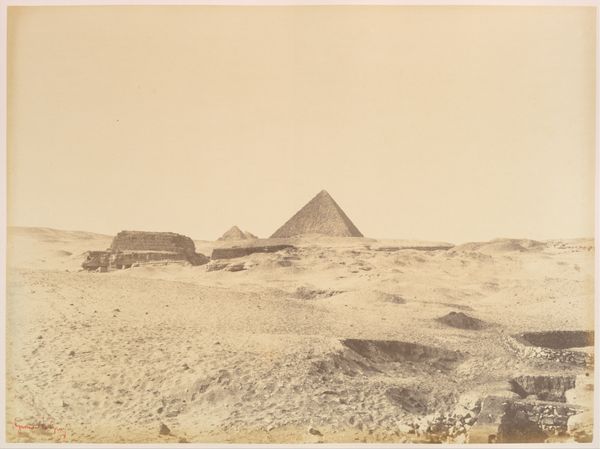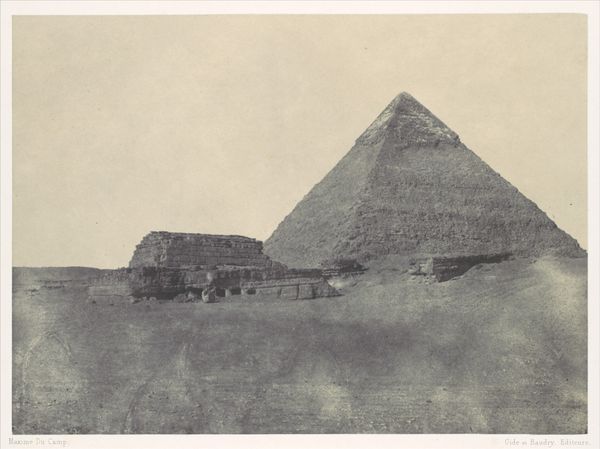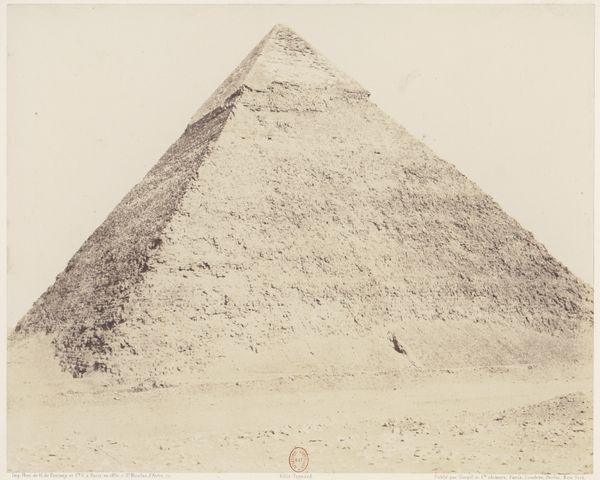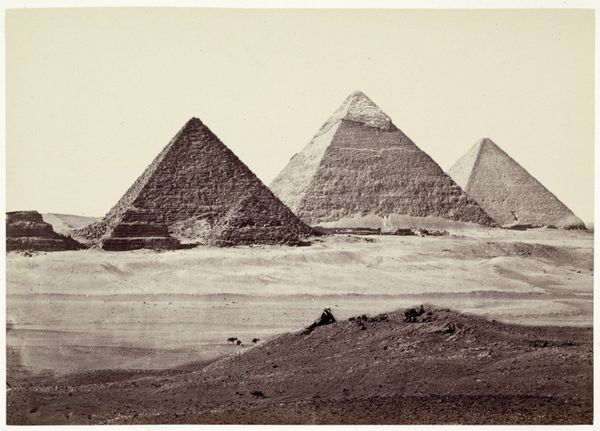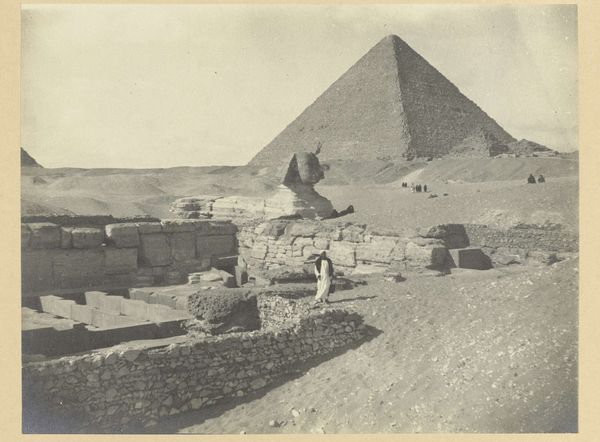
print, photography, site-specific, albumen-print
#
excavation photography
#
natural formation
# print
#
landscape
#
ancient-egyptian-art
#
photography
#
geometric
#
ancient-mediterranean
#
site-specific
#
albumen-print
Dimensions: Image: 38.7 x 49.3 cm (15 1/4 x 19 7/16 in.)
Copyright: Public Domain
Francis Frith made this albumen silver print of the Great Pyramid and the Sphinx sometime in the mid-19th century. It's a striking image, one that encapsulates a particular moment in the history of Western engagement with ancient Egypt. Consider the context: this photograph was made during the height of European colonialism. Frith was one of the first British photographers to travel widely in the Middle East, documenting its landscapes and monuments. His work catered to a growing European fascination with the "Orient," fueled by imperial ambitions and a desire for exoticism. The image itself reinforces this dynamic. By placing the colossal structures within the frame, Frith emphasizes their scale and grandeur, inviting viewers to marvel at the achievements of a distant civilization. Yet, he also subtly asserts a Western claim to this history through the act of photographic documentation, suggesting a kind of visual possession. Understanding this photograph requires us to delve into the social and political currents of the 19th century, exploring the intertwined histories of photography, colonialism, and archaeological exploration. By examining travelogues, colonial archives, and the histories of museums, we can begin to unpack the complex layers of meaning embedded within this seemingly straightforward image.
Comments
No comments
Be the first to comment and join the conversation on the ultimate creative platform.
